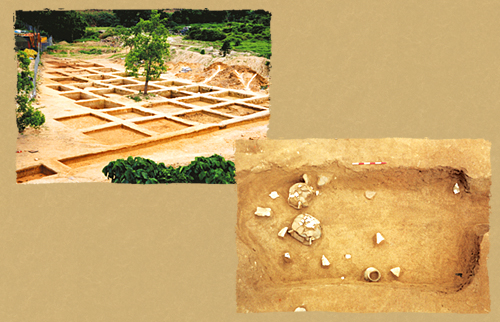
To allow the construction of a road network leading to Sai Kung, a large-scale rescue excavation funded by the Civil Engineering Department (now the Civil Engineering and Development Department) was carried out from October 2001 to September 2002. To meet the extremely tight schedule and enormous scale of the project, experts from four mainland provincial and municipal institutes – the Hebei Provincial Institute of Cultural Relics, the Henan Provincial Institute of Cultural Relics and Archaeology, the Shaanxi Archaeology Institute and the Institute of Cultural Relics and Archaeology of Guangzhou – were invited to form a joint archaeological team to conduct this rescue excavation.
Covering an area of over 3,000 m², the Sha Ha excavation is one of the largest archaeological excavation works ever to have been conducted in Hong Kong. With the various cultural phases deposited in well-stratified sequences, the site yielded rich seams of archaeological features and finds dating to the Late Neolithic period (c. 2500 – 1500 BC) and Bronze Age (c. 1500 – 221 BC) in addition to cultural deposits from the Han, Song and Ming dynasties. The archaeological features recovered included the building foundations formed by groups of postholes, stone tool workshops and burials, all of which provided important information on ancient settlement patterns, craft specialisations and social organisation in the area. A large number of sophisticated stone tools were also unearthed alongside raw materials and rough-outs. All the pottery assemblages were found in well-stratified sequences and thus offer an invaluable archaeological record for constructing the chronology of the prehistoric culture in the area.